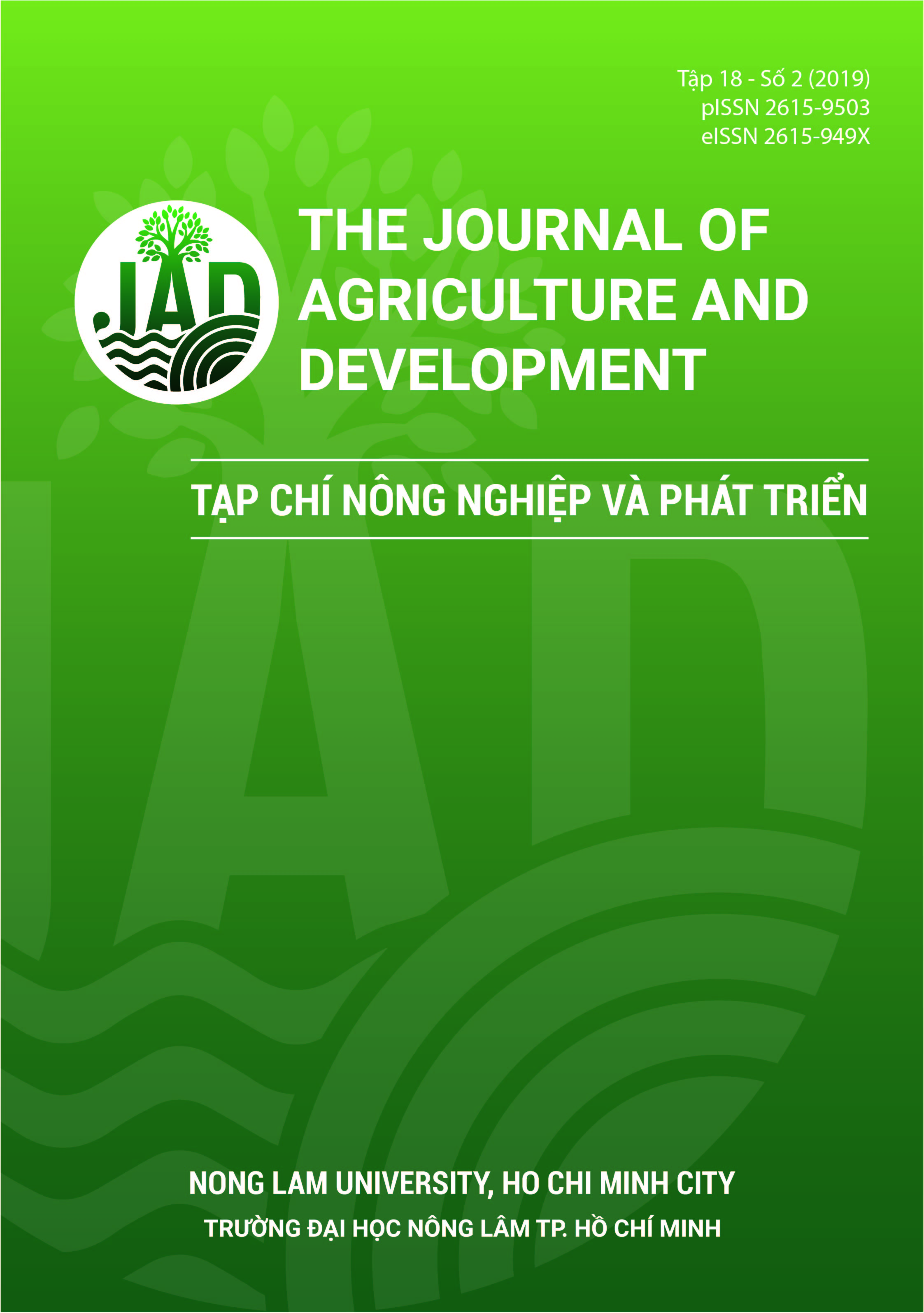Making polymer membranes immobilized with phosphate solubilizing bacteria to produce controlled release fertilizer in combination with microorganisms
Main Article Content
Abstract
The combination of slow-release nutrients with microbial activities in a fer-tilizer product could increase the fertilizer’s efficiency, and limit the impact of chemical hazard of fertilizer on the environment. The aim of this research was to determine the optimal parameters for adequate size of immobilized bacterial particles, mechanical properties of polyvinyl alcohol (PVA) and chitosan membranes with or without intergrating of immobilized bacterial particles to produce slow release fertilizer. The result showed that the com-bination of 1% sodium alginate concentration (molecular weight of 100 kDa) and 1% calcium chloride concentration was optimal for the preparation of immobilized microbial calcium alginate particles. The activity of phosphate solubilizing bacteria Burkholderia silvatlantica immobilized in micro calcium alginate particles, in PVA membrane, and in chitosan membrane after 72 h was about 84.2%, 82.2%, and 52.9%, respectively in comparison with free bacteria. Mechanical properties of PVA membrane with and without bac-terial immobilized particles with modulus, elongation, and toughness were 0.122 GPa, 115.1%, 17.65 MPa and 0.022 GPa, 220.8%, 18.70 MPa, respec-tively. Mechanical properties of chitosan membrane with and without bac-terial immobilized particles with modulus, elongation, and toughness were 0.6 GPa, 7.6%, 0.66 MPa and 0.842 GPa, 32.4%, 3.52 MPa, respectively.
Article Details
References
Azeem, B., KuShaari, K., Man, Z. B., Basit, A., & Thanh, T. H. (2014). Review on materials & methods to produce controlled release coated urea fertilizer. Journal of Controlled Release 181, 11-21. https://doi.org/10.1016/j.jconrel.2014.02.020
Kourkoutas, Y., Bekatorou, A., Banat, I. M., Marchant, R., & Koutinas, A. A. (2004). Immobilization technologies and support materials suitable in alcohol beverages production: a review. Food Microbiology 21(4), 377-397. https://doi.org/10.1016/j.fm.2003.10.005
Lubkowski, K. (2014). Coating fertilizer granules with biodegradable materials for controlled fertilizer release. Environmental Engineering & Management Journal (EEMJ) 13(10), 2573-2581.
Naz M. Y., & Sulaiman S. A. (2016). Slow release coating remedy for nitrogen loss from conventional urea: a review. Journal of Controlled Release 225, 109-120. https://doi.org/10.1016/j.jconrel.2016.01.037
Nguyen, T. T. T. (2013). Research on synthesis of biodegradable polymers based on polyvinyl alcohol and natural polysaccharides (Unpublished doctoral dissertation). Vietnam Academy of Science and Technology, Ha Noi, Vietnam.
Perin, L., Martinez-Aguilar, L., Paredes-Valdez, G., Baldani, J. I., Estrada-De Los Santos, P., Reis, V. M., & Caballero-Mellado, J. (2006). Burkholderia silvatlantica sp. nov., a diazotrophic bacterium associated with sugar cane and maize. International Journal of Systematic and Evolutionary Microbiology 56(8), 1931-1937.
Shaviv, A. (2001). Advances in controlled-release fertilizers. Advances in agronomy 71, 1-49. https://doi.org/10.1016/S0065-2113(01)71011-5
Trenkel, M. E. (2010). Slow-and controlled-release and stabilized fertilizers: An option for enhancing nutrient use efficiency in Agriculture. Paris, France: IFA. International Fertilizer Industry Association.








